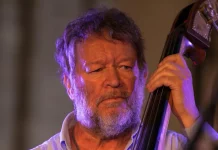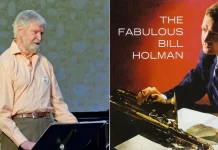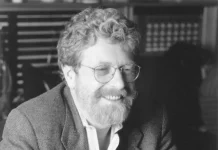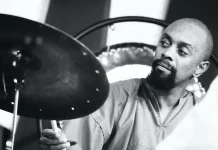
Barry Doyle Harris, a gifted and innovative pianist who early embraced and then mastered the complexities and spirit of bebop, died in hospital in North Bergen, New Jersey, from the effects of Covid-19 on 8 December. He may have contracted the virus during his final public appearance on 12 November in Queens with other recipients of a Jazz Master award from the National Endowment for the Arts. He was 91.
Harris was born on 15 December 1929 in Detroit. His father, a gas-station attendant, left the family when Barry was a child. At the age of four, he had his first lessons from his mother, a pianist at the local Baptist church. He also played bass violin in his school’s orchestra and became a full-time musician soon after graduation. He liked to recount having seen and heard Charlie Parker (with a string section) performing at a roller skating rink in Detroit, and said in 2005: “It was the greatest experience you could ever want in your life. You feel a chill just go through you starting at your feet, go through your whole body.”
Growing up in the 1940s and 50s in Detroit, he was influenced by such local rising stars as Milt Jackson, Kenny Burrell, Elvin, Thad and Hank Jones, Yusef Lateef and Tommy Flanagan, and became an evangelist for the solidifying jazz form known as bebop. In later life, Harris – a passionate and internationally known teacher – was often referred to by his students and friends as “doctor”. He bluntly informed one of his classes: “We believe in Bird, Diz, Bud [Powell]. We believe in Art Tatum. We believe in Cole [man] Hawkins. These are the people we believe in. Nothing has swayed us.”
‘You’ve all heard of Abraham Lincoln – right? Then you should also know about Tadd Dameron. If you don’t, check the history books [but] you won’t find him there’
In the first decade of his career, Harris accompanied stellar musicians visiting Detroit including Bird, Miles Davis and Lester Young, who stopped by his mother’s apartment to jam and take instruction from the music’s youngest theorist. Mark Stryker, author of Jazz From Detroit (2019), believes that Harris “was a critical reason why Detroit became a jazz powerhouse in the 1950s. A startling number of soon-to-be influential jazz musicians came up under his wing in Detroit, among them Donald Byrd, Curtis Fuller, Paul Chambers, Joe Henderson, Doug Watkins, Pepper Adams and Charles McPherson.”
After touring with Max Roach and Sonny Rollins in 1956, Harris returned to Detroit. In 1960 at the urging of Cannonball Adderley he moved to New York, and with him recorded the album Them Dirty Blues. In the following decades, he appeared on many studio sessions as a sideman including those with Sonny Criss (Saturday Morning, 1975), Lee Morgan (The Sidewinder, 1963), Dexter Gordon (Gettin’ Around, 1965), Coleman Hawkins (Sirius, 1966), Thad Jones (The Magnificent Thad Jones, 1956), Sonny Stitt (Tune-Up! 1972), Lee Konitz (Repetition, 1984), Harold Land (Lullaby Of Birdland, 1991) and Warne Marsh (Back Home, 1986).
As a leader or soloist, Harris made seminal albums such as Preminado (1960-61), Chasin’ The Bird (1962) and the aptly titled Magnificent! (1969) the latter considered by many critics to be his finest recording. As Dan Morgenstern wrote in 1970: “On this remarkable album, which maintains an uncommonly high level of inspiration, we find all the facets of a complete musician. There is no shucking and jiving, no cute concessions to hip fads, nothing but pure, honest music.” He concluded: “Harris is one of the very few pianists who never allow the fingers to fill in when the mind falters. There are no clichéd runs in his book.”
As an improviser, Harris showed that he had absorbed some of Bud Powell’s characteristic rhythmic and harmonic trademarks, combined with the lightning speed of Art Tatum and the inventiveness of his friend and latter-day companion Thelonious Monk. All of these influences are particularly evident in the lyrical and light-fingered 1964 album Barry Harris Plays Tadd Dameron.
Beginning in 1974, Harris, for a modest fee, led weekly workshops in New York for adult students, and in 1982 established the Jazz Cultural Theatre in Manhattan, where he taught seven days a week and presented student performances in the evenings. In an interview shortly before the pandemic, he reflected that witnessing a pupil making progress was “the most beautiful thing you want to hear in your life”. Always a preacher as well as a teacher, Harris once informed a Harlem club audience: “You’ve all heard of Abraham Lincoln – right? Then you should also know about Tadd Dameron. If you don’t, check the history books [but] you won’t find him there.”
In 1953 Harris married Christine Brown, who stayed in Detroit after he moved to New York. They remained married until her death in 2017. It was in New York that he met Baroness Pannonica de Koenigswarter, jazz devotee and a Rothschild heiress. As is well-known, Charlie Parker died in her palatial (and cat-infested) apartment in Weehawken, New Jersey. Less known is that in 1963 Harris moved in, with an agreement that he could stay there after her death (she died in 1988). In 1972, Thelonious Monk joined him and stayed until his death in 1982. The house had two pianos, next to each other, and Monk and Harris practised together.
Following a stroke in 1993, Harris recovered sufficiently to resume touring and teaching all over the world. With the constraints associated with the coronavirus pandemic, he conducted lessons on Zoom for about 100 international students until two weeks before his death. He also took music lessons himself, studying with the classical pianist Sophia Rosoff until her death in 2017.
Wherever he performed, Harris often stayed over for a few days to hold master classes, and had an annual residency at the Royal Conservatory in Amsterdam. He liked to inform his students: “Cats, and this could be cats of any age, play all kinds of patterns but they don’t understand that it takes silence too. You have to pause all the time, like in a conversation. That silence is not empty space. It’s one of the necessary parts.” Count Basie, another practitioner of “silence”, would have endorsed that remark.
In 1960 Harris asserted: “You have to enjoy playing. The old-timers did, and that’s one reason why there is a lasting music. I feel that I play jazz to entertain the listener, and you just can’t do that unless you yourself are entertained at the same time.”
In 1989 (obviously enjoying himself) he appeared in a documentary film Thelonious Monk: Straight, No Chaser (produced by Clint Eastwood) performing duets with kindred spirit Tommy Flanagan. Ten years later he reflected: “The piano is a funny thing. You’ve got to sort of glide over it. You have to skate over it.”
Perhaps the most succinct and deserved tribute he ever received was that of the New York Times critic Robert Palmer, who described him as a “one-man jazz academy”. Harris’s own verdict was: ”I guess I’m really what you would call an inveterate bebopper, forever and a day.”















